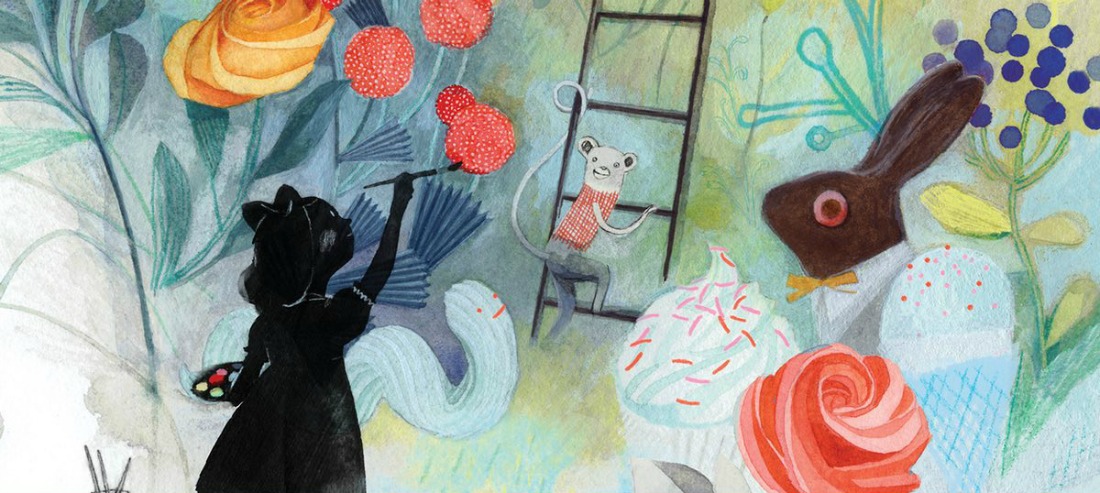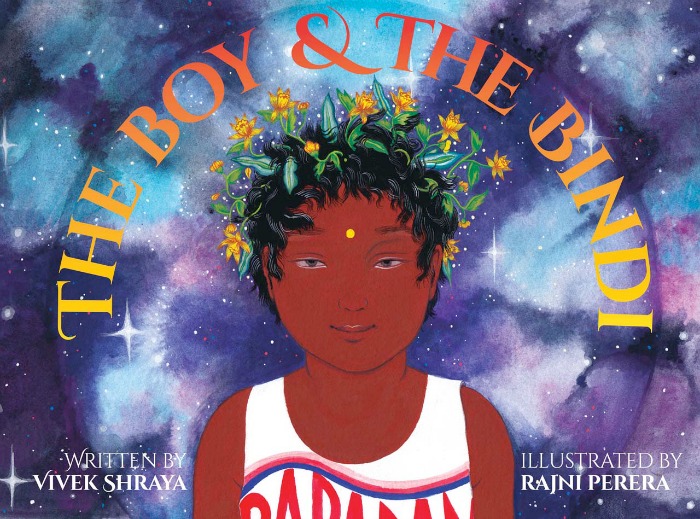
Image from Virginia Wolf by Kyo Maclear, illustrations by Isabelle Arsenault (Kids Can Press, 2012)
How children's books find their way into non-normative childhoods is a question that fascinates English and Film Studies professor Nat Hurley.
New and unintended meanings derived from existing literature-as inthe embrace of Hans Christian Andersen's The Little Mermaid by transgender children and their families-is part of it, but so is the growing field of children's literature created by, and written for, individuals who fall outside of the mainstream.
The complexities of circulation-or the paths material objects, such as books, take as they move through the world, changing (in some cases) how we read those texts-is at the core of Hurley's research. She attributes this interest to a number of influences, including a childhood spent in Newfoundland amidst a population that imagines itself on the margins of Canada.
"I teach a lot of things like fairy tales, Peter Pan and Alice in Wonderland, but I also teach from the vantage point of being outside the mainstream," says Hurley. "I like that idea of being from the margins and reading from the margins. With Canadian literature, it's not the Atwoods or the Laurences but writers like Vivek Shraya."
Shraya is a Toronto-based trans writer and Faculty of Arts alum ('03 BA) whose recent children's picture book,The Boy and the Bindi (illus. Rajni Perera/Arsenal Pulp Press, 2016), tells the story of a young boy who is fascinated by his mother's bindi, a red dot at the centre of her forehead (a common practice among Hindu women).
"He takes that as part of his own mode of identification," says Hurley. "It's a cross-gender identification that is rooted in the cultural context of that family."

The Boy and the Bindi by Vivek Shraya, illustrations by Rajni Perera (Arsenal Pulp Press, 2016)
Another Canadian picture book Hurley cites as an example of storytelling that reaches out to an underserved audience is the Governor General's Literary Award-winningVirginia Wolf by Kyo Maclear (illus. Isabelle Arsenault/Kids Can Press, 2012). Loosely based on the relationship between Virginia Woolf and her sister Vanessa Bell, the story allows the author to use Virginia's "wolfish moods" as an opportunity to explore mental health.
"There are lots of stories we don't like to tell about children and this is another one of them," says Hurley. "Where do you see the depressed child very often? The demand to play, the demand to be happy is so pervasive. The book features art as a transformational space, where you can paint a world that will help your sister be less wolfish and depressed. I think there is something remarkable about that."
Storytelling built around a particular issue runs the risk of being overly didactic, favouring message over delight, but at the same time, Hurley says the "magical thinking" inherent in children's literature creates a furtive landscape of imaginative possibility, untethered to geography.
"Stories that capture the imagination transcend borders," she says. "Andersen's Little Mermaid is a Danish folktale, but nobody thinks to read it in Danish."
In terms of Canadian children's literature, Hurley is hesitant to ascribe a singular character to it, preferring instead to see it as part of a larger, global force.
"When you put Anne of Green Gables alongside Alice in Wonderland I think Canada makes those contributions as well as anyone," she says. "And I think we're forging forth in the area of Indigenous children's literature. Very few places, maybe Australia, have as many amazing artists and writers who are contributing to that body of work."
While the printed book, Canadian or otherwise, has its challenges, in the world of children's literature it persists and, as Hurley notes, circulates in new ways alongside electronic texts and online interfaces.
"Printed books are still being published at a rapid rate," says Hurley, "but more and more children experience the world through an IPad. You can see children swiping the screens of television wondering why they don't move. It's a whole other world of cultural exposure."
"It's shapeshifting, but there's something about the children's book that grabs people as the cornerstone of literacy and the cultivation of the imagination."
For almost as long as there's been a Canada, there's been a University of Alberta. Over the next year, in honour of Canada's 150th anniversary, we're proudly celebrating the people, achievements, and ideas that contributed to the making of a confederation.
